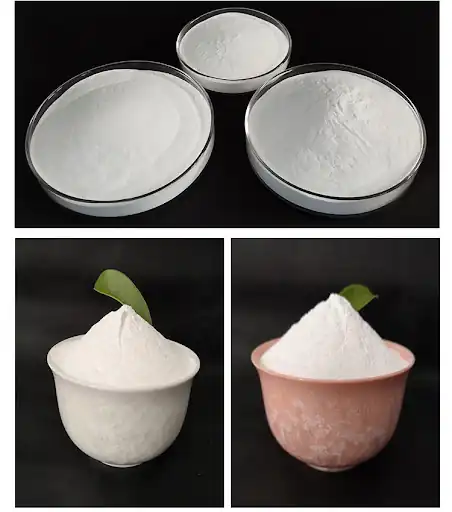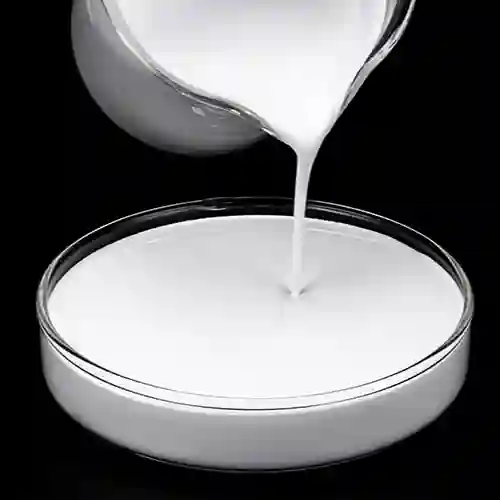Hebei Messi Biology Co., Ltd. stated that magnesium hydroxide is an important inorganic chemical product. It is widely used in material processing due to its characteristics of high thermal stability, strong adsorption capacity, weak alkalinity, non-toxicity and harmlessness ( Flame retardants, fine ceramics, coatings, etc.), environmental protection (wastewater treatment, flue gas desulfurization, heavy metal removal, etc.), pharmaceutical and food additives, etc. According to different physical states, the preparation methods of magnesium hydroxide can be divided into solid phase method, liquid phase method and gas phase method. Among them, the liquid phase precipitation method is the most commonly used preparation method. According to the type of alkali used in the precipitation process, it can be divided into lime method, sodium hydroxide method, ammonia method, etc.
The magnesium hydroxide product prepared by the ammonia method has higher purity, but it also has the problems of uneven particle size distribution and low yield. The ammonia nitrogen content in the by-products of the ammonia process is high. However, ammonia nitrogen is a substance that is strictly restricted by the state. At the same time, ammonia gas is easy to volatilize. If the sealing of the preparation device is not good, environmental problems may occur. In the process of precipitating magnesium hydroxide, the lime method will inevitably bring in a large amount of calcium ions, and the complete elimination of calcium ions is often difficult to achieve. The magnesium hydroxide prepared by using strong alkali sodium hydroxide as a precipitating agent and reacting it with a magnesium chloride solution has the characteristics of high purity and small particle size. However, due to the extremely fast reaction speed during the precipitation process, the generated magnesium hydroxide has small particle size and high surface energy. In addition, the generated magnesium hydroxide crystal form is not fully developed, and the polar crystal face exposure ratio is high, so the interaction between particles is strong, and colloidal precipitates are easily formed, thereby increasing the difficulty of filtering the magnesium hydroxide slurry. The final filter cake has a high moisture content, is difficult to wash, and requires high energy consumption in the drying process.
In order to solve the problem of difficult filtration of magnesium hydroxide prepared by sodium hydroxide precipitation method, scholars at home and abroad have done a lot of research work. Research from the perspective of reaction kinetics shows that in the magnesium hydroxide precipitation reaction, low magnesium hydroxide supersaturation and low magnesium precipitation rate will be beneficial to the growth of magnesium hydroxide crystals, and can obtain hydroxide with better performance. magnesium. However, this condition is inconsistent with actual production. Because low supersaturation means reducing the concentration of magnesium ions, a large amount of water will be wasted. Low magnesium precipitation rate means reducing the recovery rate of magnesium, so this theory is difficult to apply. in actual production.
At present, research work on improving filtration performance mainly includes: (1) Adding flocculants, dispersants and other additives. The addition of flocculants destroys the stability of the sol system, increases the settling speed of magnesium hydroxide particles, and improves the efficiency of the magnesium hydroxide slurry. Filtration performance, but the improvement effect is not obvious; (2) Adding seed crystals can effectively improve the agglomeration phenomenon of magnesium hydroxide, thereby improving the filtration performance of magnesium hydroxide. However, the effect shown in actual use is also very limited; (3) Add surfactant. The surfactant acts as an electrostatic repulser on the surface of magnesium hydroxide, making it difficult for magnesium hydroxide to aggregate and thereby improving the filtration performance. However, if the crystal grains of magnesium hydroxide are too small, it will still be difficult for the surfactant to exert its effect. Function; (4) Hydrothermal treatment can cause the magnesium hydroxide to undergo a dissolution and recrystallization process, and the particle size of magnesium hydroxide increases, thereby improving the filtration performance. However, the traditional hydrothermal treatment process requires high temperatures and pressures, and the reaction It takes a long time, can usually only be carried out in the laboratory, and is difficult to implement in large-scale production.
Hebei Messi Biology Co., Ltd. stated that how to change the surface properties of magnesium hydroxide and improve the filtration performance of magnesium hydroxide slurry through scientific system design and process innovation is still the production of ultrafine magnesium hydroxide materials prepared by sodium hydroxide precipitation. technical problems that need to be solved urgently during the process.


